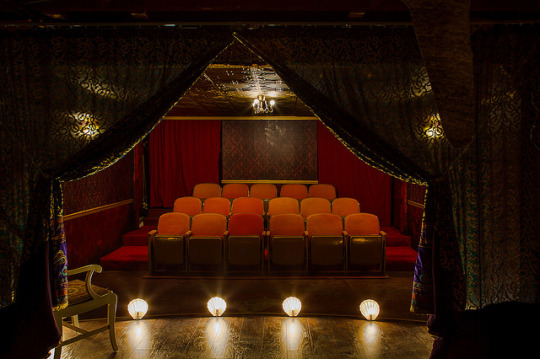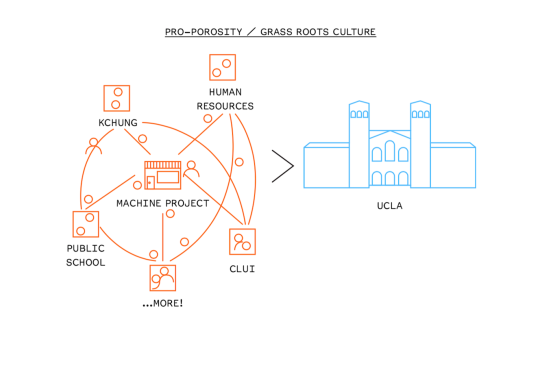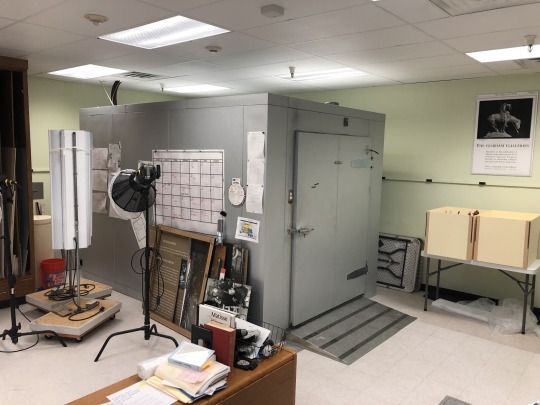#and its standardization is full of etymological errors
Explore tagged Tumblr posts
Text
omg girl i'm reading youtube comment discourse about the standardization of the french language and it is JUICY
(link to remember. genevieve and hugo both slay hard)
#citrustalk#citrusparle#that one person who said 'actually french spelling is perfectly logical according to the rules of greek and latin#and we don't want our language to fall to the TROGLODYTES who haven't studied these dead languages'#and then someone responding to say '...??? french isn't related to greek#and if you actually knew anything about greek you would know it doesn't explain anything of this bullshit#and also french spelling was standardized in the 19th century which was very recent#and its standardization is full of etymological errors#some of these words are spelled in a way completely unrelated to their pronunciation/meaning#because l'academie francaise completely misunderstood where they came from'#like OKKK RYKE_MASTERS IN THE YOUTUBE COMMENTS GO OFFF
1 note
·
View note
Text
Johanna Hedva and Lucas Wrench on the durational performance of Machine Project

When Machine Project closed a year ago, on January 13, 2018, we wondered: what if what just ended was a show that was fifteen years long? Perhaps a bunch of artists had visited there as unwitting collaborators in, and audience to, an ongoing performance disguised as discrete events? We asked a couple Machine regulars to write about the show and reflect on how it might help them think about issues specific to performance.
Johanna Hedva: If Machine Project wasn’t a big ol’ performance, what was it?
Was it a science-fiction movie? It had (was) an imaginative concept that foregrounded innovation and exciting technologies, and was entirely populated by extraterrestrials.
Was it a catering service? When I worked there, every day we’d scoot the tables together and squinch our IKEA folding chairs in close and eat the takeout lunch Mark Allen had bought for us out of company funds, and this is the number one reason, of so many reasons, why it’s still the best job I’ve ever had, and I imagine I can speak for my fellow colleagues in saying that it’s one of the best jobs they’ve ever had, simply because eating together day in and day out for several years builds community and trust and friendship like nothing else.

Figure 1: Claire Kohne as Kalypso the vengeful sorceress who chases after Odysseus as he is being rescued in the VONS parking lot. From Odyssey Odyssey (2013).
Was it a really long Vine? ‘Twas a zany goofball slapstick premise exceptionally executed in an unfathomably pinched amount of time, and also served as a vessel for cultural criticism and commentary, while birthing a zillion trends.
Was it a tabletop role-playing game? Maybe not exactly, but in essence it was a bunch of people who could be called players rather than competitors, creating their own characters who participate in a collective narrative within an agreed-upon (fictional or non) setting, which follows guidelines and rules of that agreed-upon world, but which is not necessarily and probably quite different from the rest of the world, and which is great fun and probably addicting. Also, once they got that great website, they sort of became a MMORPG (massively multiplayer online role-playing game), because of those brilliant animated avatars (drawn by Tiffanie Tran) of an octopus (representing the artist), a cactus with a beret (poets), and a pineapple with a mustache (representing the public).
Was it a Hollywood blockbuster? Because it pretty much fits film critic Tom Shone’s definition of a blockbuster being “a fast-paced, exciting entertainment, inspiring interest and conversation beyond the theatre (which would later be called ‘buzz’), and repeated viewings,” and, for a nonprofit, it was pretty damn financially successful.
Was it a book of aphorisms? Fits the Online Etymology Dictionary’s definition for aphorism as “a concise, terse, laconic, and/or memorable expression of a general truth or principle,” and it would be more than just one aphorism, more like a book of them, a very long book, because there were way more than just a few.

Figure 2: Joe Seely as Clay, an old bitch who's been waiting in the desert for 100 years to see the symbol of her desire again. From Ancient Monuments to What (2015).
Speaking of books! Was it a cookbook? Chock full of recipes that simultaneously include careful measurements and room for error, for how to make various dishes, from soupy liquids to layered cakes to multi-plated entrees?
Was it an example of magical realism? Political critique folded into phantasmagorical otherworldly otherworlds, with intricate metaphors, animals, witches, forests, and shipwrecks, and strange objects and doorways that may or may not take you to another dimensional realm that may or may not be 100 years from now or in the past.
Was it a PhD thesis on how certain forms of sociality feel better than others, but strangely it’s hard to articulate why?
Was it an attempt at utopia? Isn’t utopia inherently a failure? Then, but, so, didn’t it succeed?
Was it a puzzle that refused to be solved?

Figure 3: Nickels Sunshine as Yama-uba, a crone with mouths under her hair who feeds on young girls. From Ancient Monuments to What (2015).
Was it a distant island that we tried to voyage to, but alas, our ship ran aground and our beards grew wildly and became entangled in the rigging and, thin with scurvy, we watched the sun go down as the skies roared with thunder and some of us howled at the future while others listened to the wind?
Was it a petition or a vow?
Was it a love letter? It loved me. I loved it. Am I the only one, I don’t think so.
Should these questions be answered? Can they? But why would we want to?
Was it a promise covered in tiny musical notes that when all played together made the big, resounding chord of curious joy?
Was it a dream? It was one of the best dreams.
Johanna Hedva is a fourth-generation Los Angelena on their mother’s side and, on their father’s side, the grandchild of a woman who escaped from North Korea. Hedva is the author of the novel, On Hell (2018, Sator Press). Their fiction, essays, and poems have appeared in Triple Canopy, The White Review, Black Warrior Review, Entropy, Mask, 3:AM, Asian American Literary Review, The Journal Petra, DREGINALD, and Two Serious Ladies. Their works of performance, design, and sound have been shown at Human Resources LA, PAM, the Getty’s 2013 Pacific Standard Time, the LA Architecture and Design Museum, and the Museum of Contemporary Art on the Moon. Most of their performances in Los Angeles were hosted by Machine Project, including The Cave series and Odyssey Odyssey, their adaptation of Homer's Odyssey, which was performed in a Honda Odyssey being driven down the freeway.
Lucas Wrench: Notes on Vermin
The Machine Project Mystery Theater was originally built in 2013 for Chris Weisbart’s Alvarado Caverns project - which transformed Machine Project’s storefront into an amalgamation of a 99 cent store, gas station bathroom, hologram-laden indoor cave, and a faux-victorian seventeen seat basement theater, replete with velvet curtains, gold foam molding, and clamshell stage lights. Most importantly, Machine Project’s Mystery Theater featured a drop-tile foam ceiling, painted gold, leaving a ten inch gap between Machine Project’s rapidly deteriorating ground level floorboards and the precariously adhered foamcore below. Due to Machine Project’s penchant for spontaneous trapdoor construction, by the time I arrived in the summer of 2014, this once benign buffer zone had transformed into a kind of snack graveyard, home to pretzel crumbs, gummy bears, stray popcorn, spilled Tecate, and several bags of chips.
I’d like to examine the multi-year rat infestation that followed through the lens of what our founder refers to in donor presentations as “grass roots porosity”. It’s the philosophy that a small, nimble art space like Machine Project can be host, partner, and collaborator with a wide range of fellow art spaces, community groups, and institutions, creating a network that’s arguably more generative than those of better funded, but less porous institutions.

Figure 1: “Pro-Porosity / Grass Roots Culture”
Porosity is a liability for museums. While Machine Project’s vermin offerings were limited to Snyder’s pretzel rods and various gas station snacks, the sustenance provided by collecting institutions is far more valuable. Anthropological materials offer a protein rich food source, full of keratin, wood proteins, and plant matter. Works on paper can be considered simple sugars - easily digestible starches beloved by louse and silverfish. Painting offers a mixed diet - glues and varnish, wood and canvas. In anticipation of these threats, the borders of the institution are vigilantly policed. Giant freezers inoculate unseen intruders. Inspections and traps hunt for “visitors” like lady bugs and house flies, that can indicate a breach in security and become food for more malevolent vermin. Black lights scan for eggs and insect trails that warn of pending invasions.

Figure 2: Document Freezer at the Gilcrease Museum - Tulsa, OK

Figure 3: Insect trap collection at Gilcrease Museum - Tulsa, OK
To be clear, i’m not advocating for more rat-infested art spaces. Machine Project’s infestation was traumatizing. It demanded weekly visits from Karl The Exterminator to remove glue traps from the drop ceiling. I had a rat chew its way through the secret trapdoor in the upstairs apartment and fall some sixteen feet into the storefront. I saw rat tails dip low between the foamcore tiles, nearly brushing the heads of unsuspecting audience members below. Mice crawled over my feet as I attempted to run sound from the back of the theater. More traumatizing still was the constant, audible scurrying, the threat that at any moment the flimsy tiles would fall, unleashing the barely contained plague above.

Figure 4: Diagram of Machine Project Rat Migration
But with a year and a half of distance between me and the rats, I recognize that the conditions that enabled this gnawing torment are the same conditions that made Machine Project such a valuable resource for artists. It was a space where you could cut a trapdoor in the ceiling without hesitance, and install gold foam tiling without concern for the ensuing trash accumulation. Where a temporary basement theater could stay up for a few more years so other artists can use it. Where the solution to a three year rat infestation was removing the floor of the storefront entirely, then reinstalling it at a 30 degree angle to present a play.
I’m now living in Tulsa, Oklahoma, working at a museum with a giant freezer and insect traps, in an office that requires key-cards to access, where no food is allowed, and the trash is dutifully removed every night. I am protected here - a beneficiary of the museum’s commitment to preserve their collection in perpetuity, and a casualty of the fact that crumbs in my office could spell disaster for some Xth century manuscript stored a floor below. But from a public programming perspective, tasked with bringing the outside in, I can’t help wondering what it would look like to create some space here where a bit of infestation is tolerable. The only problem is how to keep it from spreading.
Lucas Wrench is a 2019 Tulsa Artist Fellow. He was Machine Project’s operations manager (2014-2017) and associate curator (2015-2017).
Machine Project was a place for artists to do fun experiments, together with the public, in ways that influenced culture. It happened at 1200 D North Alvarado, Los Angeles, CA 90026, and elsewhere, from 2003-2018.
Photos by Laure Joliet and provided by the artists.
0 notes